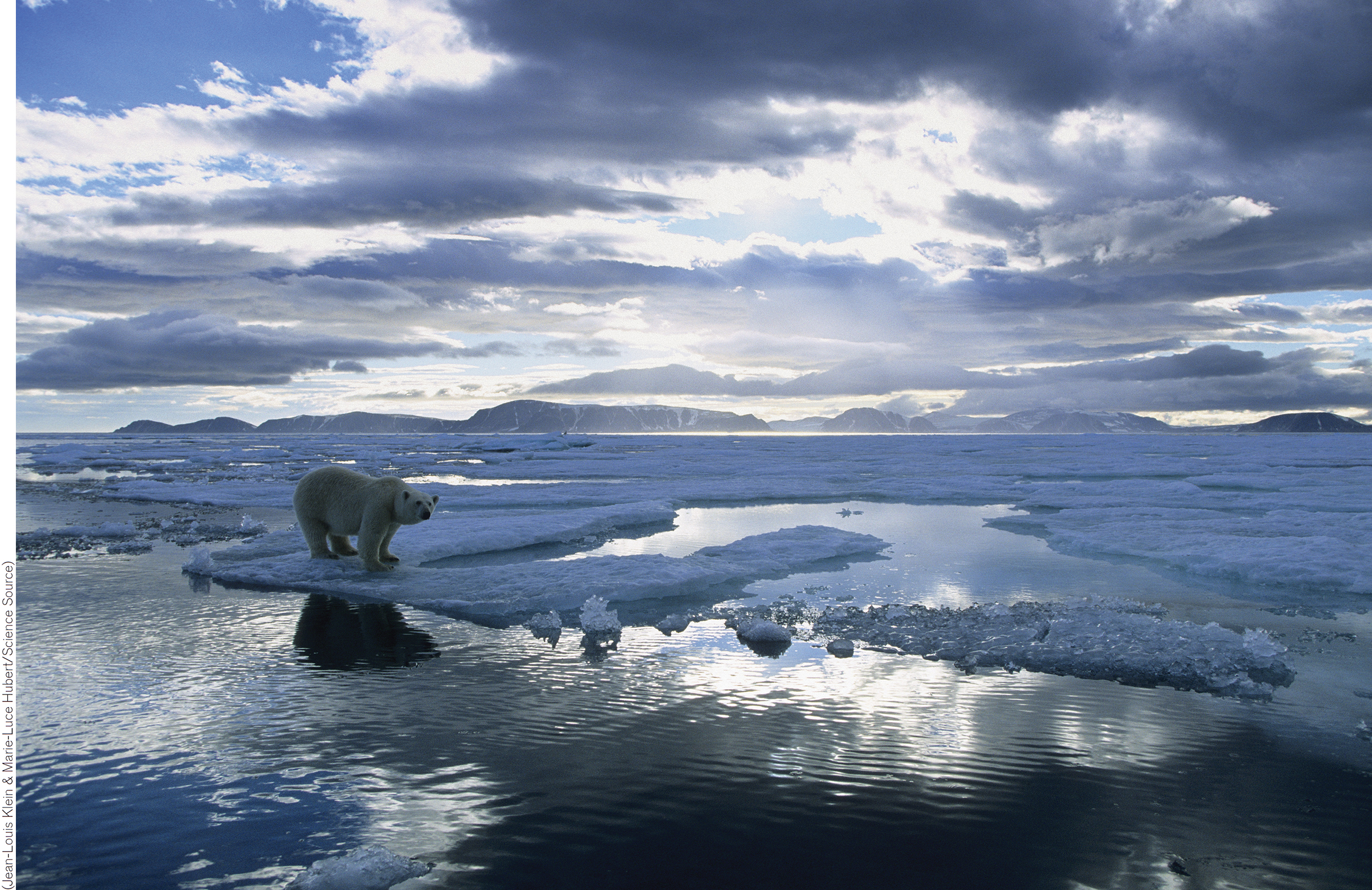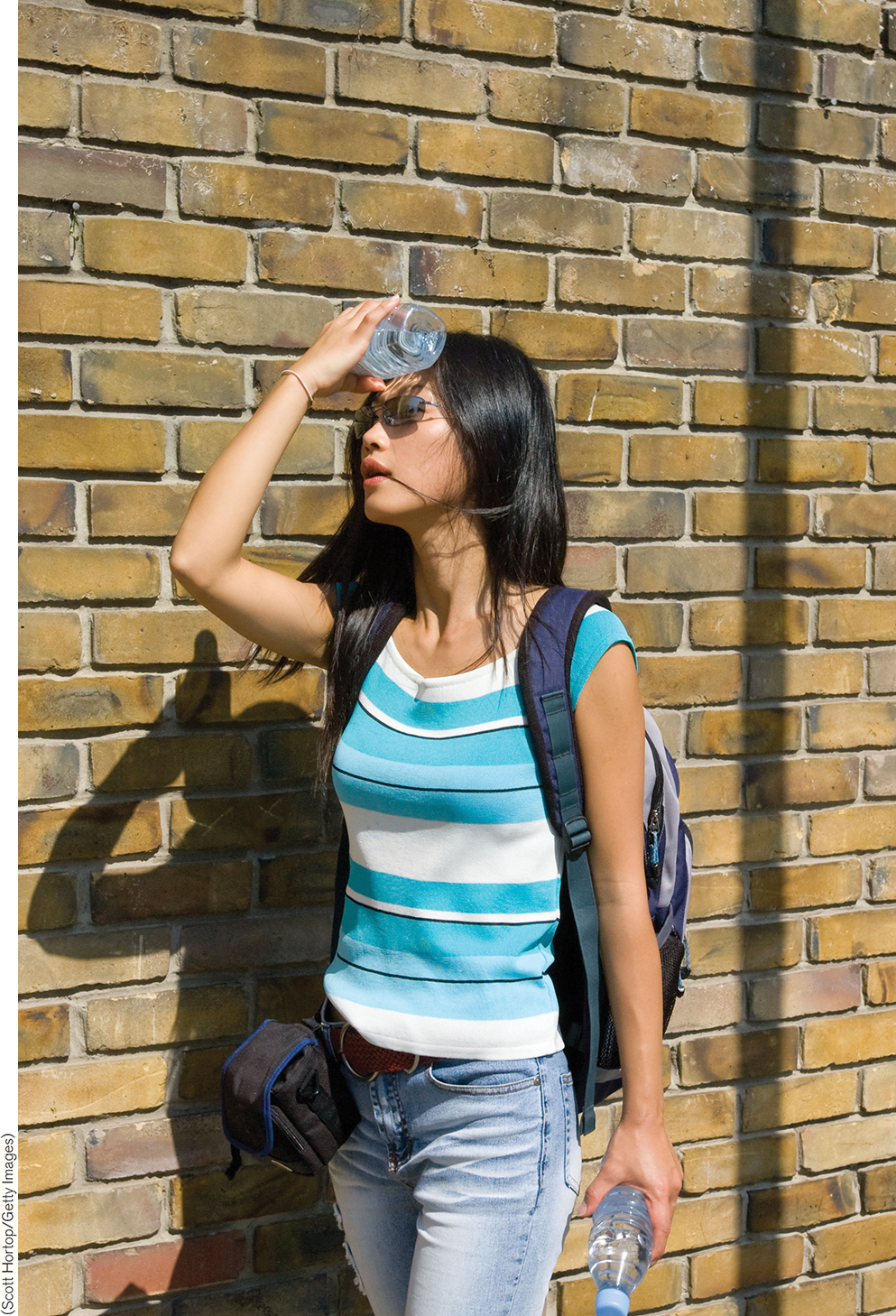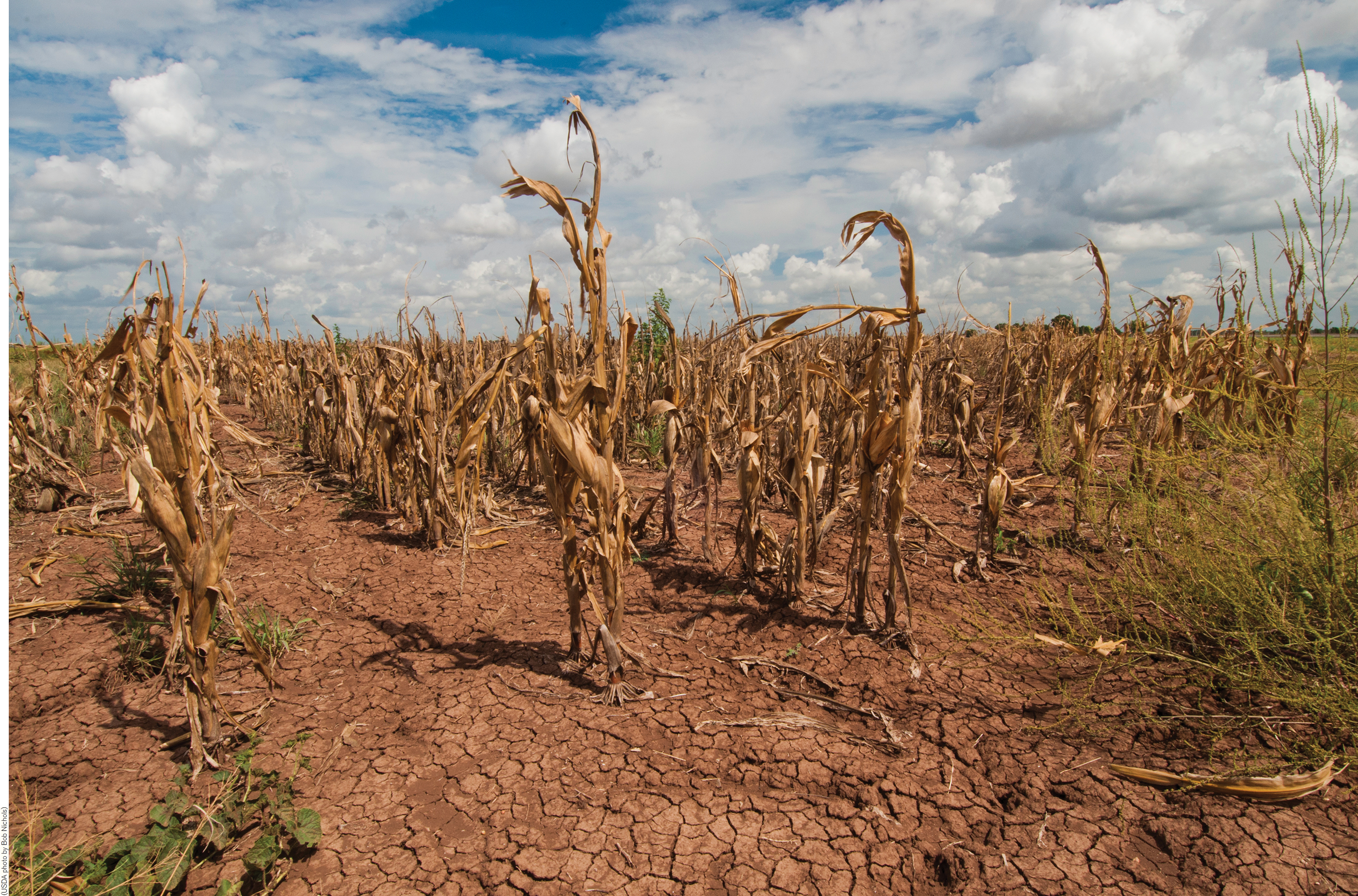Chapter Introduction
CHAPTER 14
Global Climate Change

427
Central Question: How can we mitigate and adapt to the environmental and social impacts of climate change?
 SCIENCE
SCIENCE
Explain the factors that control climate and global temperatures.
 ISSUES
ISSUES
Analyze the causes and impacts of a warming global climate.
 SOLUTIONS
SOLUTIONS
Discuss the local and international tactics that could mitigate global climate change.
Tracking Wildfires in the West
428
Raging fires and extreme weather events could become more common with a changing global climate



At 7 A.M. on June 23, 2012, a jogger was running along the Waldo Canyon Trail in the mountains above Colorado Springs, Colorado, when he smelled smoke. He veered off the trail to investigate and found a smoldering fire in the woods. After he reported the fire to the local sheriff’s department, high winds and drought conditions in the forest caused the fire to spread over 600 acres in several hours’ time, leading to evacuations of several nearby communities. By the time firefighters finally contained the Waldo Canyon Fire, two and a half weeks later, it had burned 7,384 hectares (18,247 acres) and 346 homes, killing two people. It ranked as the most destructive fire in Colorado’s history, resulting in insurance claims of more than $450 million. Although the fire may have been started by an arsonist, another suspect has been singled out for its rapid spread and devastating impact: climate change.
That year, the wildfire season in the West came on the heels of a period of unrelenting heat. During the 12 months from August 2011 to July 2012, land temperatures in the 48 contiguous United States were the warmest in 117 years of record-
429
Abnormally high temperatures in the United States had other impacts as well. For instance, cattle had so little healthy pasture that the USDA allowed ranchers to graze their cattle on conservation lands set aside for erosion control and wildlife habitat. Approximately half of the nation’s corn crop and one-
“Preservation of our environment is not a liberal or conservative challenge, it’s common sense.”
President Ronald Reagan, State of the Union address, January 1984)
Climate scientists modeling future climates believe that the summer of 2012 may provide a preview of some of the environmental and economic consequences of climate change. In fact, they have concluded that by mid-
By the end of the 21st century, climate models suggest that the temperature of Earth’s surface will rise another 2 to 3°C. “Warming of the climate system is unequivocal, and since the 1950s, many of the observed changes are unprecedented over decades to millennia,” wrote the authors of the fifth assessment of the Intergovernmental Panel for Climate Change (IPCC), published in 2014. “It is extremely likely that human influence has been the dominant cause of the observed warming.”
The good news is that once we recognize that we are significant contributors to climate change, there are steps we can take to reduce the problem. However, as we address this issue, we will need to avoid causing other forms of disruption, both environmental and economic.
Central Question
How can we mitigate and adapt to the environmental and social impacts of climate change?